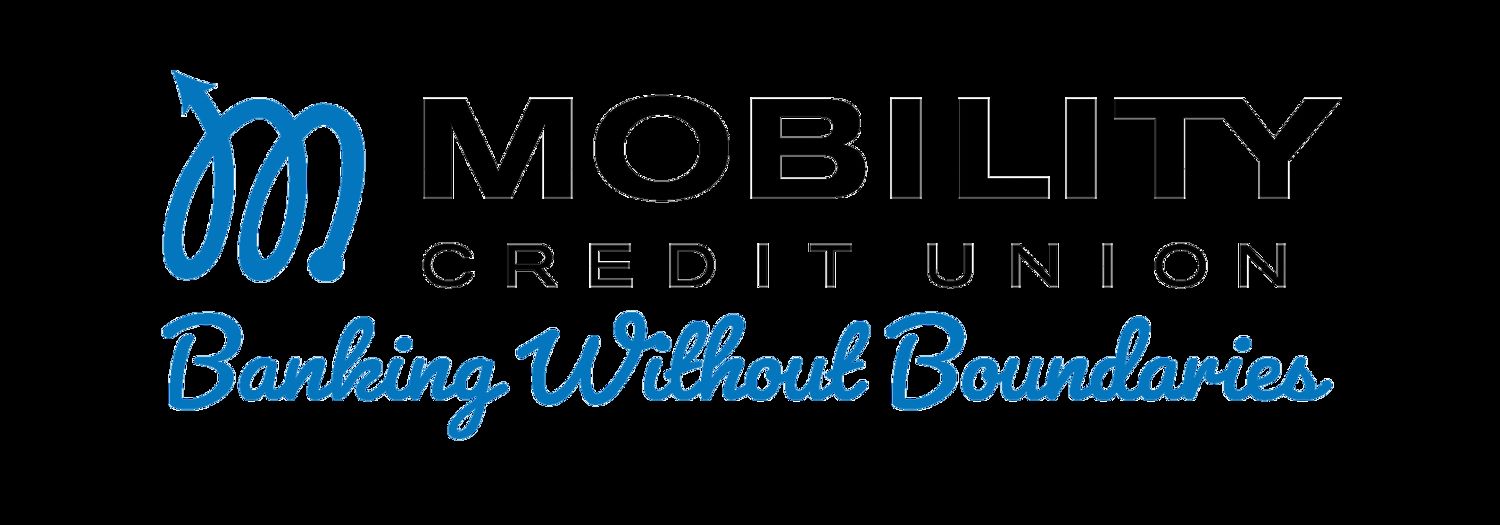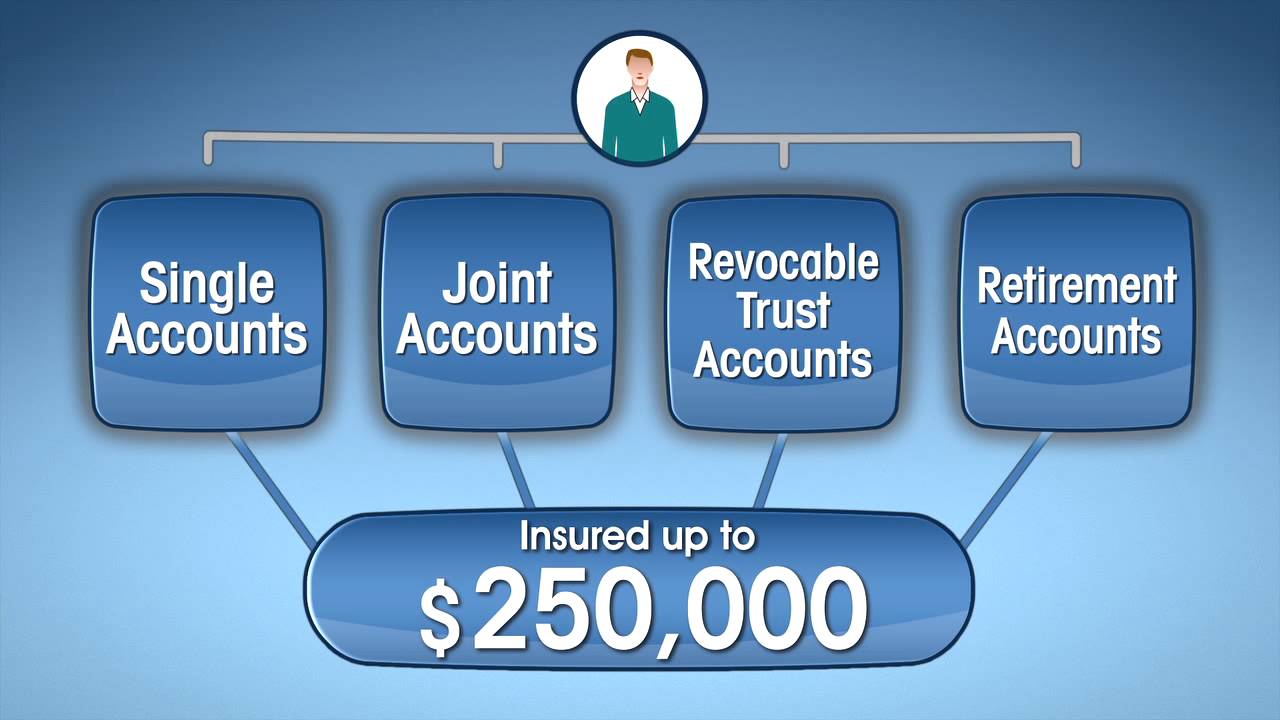

Finance
How To Open Credit Union
Published: January 12, 2024
Learn the step-by-step process of how to open a credit union and gain access to finance opportunities. Expand your financial horizons with our expert guidance.
(Many of the links in this article redirect to a specific reviewed product. Your purchase of these products through affiliate links helps to generate commission for LiveWell, at no extra cost. Learn more)
Table of Contents
- Introduction
- Step 1: Determine Eligibility
- Step 2: Research Credit Unions in Your Area
- Step 3: Compare Services and Fees
- Step 4: Gather Necessary Documents
- Step 5: Visit the Credit Union
- Step 6: Complete the Membership Application
- Step 7: Fund Your Account
- Step 8: Access and Utilize Credit Union Services
- Step 9: Maintain Active Membership
- Conclusion
Introduction
Opening a credit union account can provide you with a range of financial services, including savings accounts, loans, and credit cards. Credit unions are member-owned financial institutions that offer competitive rates and personalized customer service. Unlike traditional banks, credit unions are not-for-profit organizations that prioritize the financial well-being of their members.
In this article, we will guide you through the process of opening a credit union account. We will outline the steps you need to take, from determining eligibility to accessing and utilizing credit union services. By following this step-by-step guide, you can join a credit union and reap the benefits of becoming a member.
Before we dive into the details, it is important to note that credit unions have eligibility criteria that may differ from institution to institution. Generally, eligibility is based on factors such as geographic location, employment, organizational affiliation, or membership in a specific community or group. Make sure to check the eligibility requirements of the credit unions you are interested in before proceeding with the application process.
Now, let’s explore the steps involved in opening a credit union account.
Step 1: Determine Eligibility
The first step in opening a credit union account is to determine your eligibility. As mentioned earlier, credit unions have specific criteria that you must meet in order to become a member. These criteria can vary depending on the credit union’s membership requirements.
To determine your eligibility, start by researching credit unions in your area. Visit their websites or contact them directly to find out if you meet their membership qualifications. Some common eligibility criteria include living or working in a specific geographic area, being affiliated with a certain organization or employer, or being a member of a particular community or group.
Keep in mind that credit unions prioritize serving their members and their communities, so they may have more strict eligibility requirements than traditional banks. It’s important to carefully review these requirements to ensure you meet the qualifications before proceeding with the application process.
If you find that you are not eligible for a particular credit union, don’t worry. There are many credit unions available, and it’s likely that you will find one that fits your criteria. Take the time to research and explore different credit union options to find the right fit for your financial needs.
Once you have determined your eligibility for a credit union, you can move on to the next step: researching credit unions in your area.
Step 2: Research Credit Unions in Your Area
After determining your eligibility, the next step is to research credit unions in your area. This step is crucial as it allows you to compare the different options available to you and choose the one that best suits your financial needs.
Start by compiling a list of credit unions in your local area. You can use online search tools, ask for recommendations from friends and family, or even inquire at your workplace or community organizations. Look for credit unions that align with your eligibility criteria and have a strong reputation for providing quality services and favorable terms.
Once you have your list, delve deeper into each credit union’s offerings and features. Consider factors such as the range of accounts available (savings, checking, certificates of deposit, etc.), loan options (personal loans, auto loans, mortgages, etc.), and additional services like online banking, mobile apps, and customer support. Also, take note of any special promotions or discounts for specific groups or affiliations.
Be sure to pay attention to the credit union’s fees and interest rates. One of the advantages of credit unions is that they often offer lower fees and higher interest rates compared to traditional banks. However, it’s still crucial to understand what fees may be associated with different services and how they compare to other credit unions or financial institutions.
Additionally, take the time to read customer reviews and testimonials to gauge the overall customer experience. Look for positive feedback regarding the credit union’s communication, responsiveness, and personalized service. A credit union that prioritizes member satisfaction and provides excellent customer support will likely be a good choice.
By thoroughly researching credit unions in your area, you can determine which ones align with your eligibility requirements and provide the services and features that best suit your financial goals. This research will help you narrow down your options and move on to the next step: comparing services and fees.
Step 3: Compare Services and Fees
Once you have identified a list of credit unions in your area, the next step is to compare the services and fees they offer. This step is crucial in helping you find the credit union that aligns with your financial needs and goals.
Start by assessing the range of services provided by each credit union. Look for services such as savings accounts, checking accounts, loans (personal, auto, mortgage, etc.), credit cards, and financial planning assistance. Consider what services are most important to you and ensure that the credit union offers them.
Next, evaluate the fees associated with each service. While credit unions generally have lower fees compared to banks, it’s important to understand the fee structure of each institution. Look for fees such as monthly maintenance fees, transaction fees, ATM fees, and any other charges that may apply. Make sure to compare these fees across different credit unions to ensure you choose an institution that offers competitive rates.
Keep in mind that credit unions may have additional requirements or criteria to avoid certain fees. For example, some credit unions may waive monthly fees if you maintain a minimum balance or have a certain number of transactions each month. Take note of these requirements and assess whether you can meet them consistently.
Another important factor to consider is the interest rates offered by the credit union. Compare the interest rates for savings accounts, loans, and credit cards. Higher interest rates on savings accounts can help you grow your money faster, while lower interest rates on loans and credit cards can save you money on interest payments.
Additionally, consider the credit union’s online and mobile banking capabilities. In today’s digital age, having easy access to your accounts and the ability to manage your finances online is crucial. Look for features such as mobile banking apps, online bill payment, and remote check deposit options.
By comparing the services and fees offered by different credit unions, you can make an informed decision about which institution aligns with your financial goals. Once you have identified the credit union that best meets your needs, you can move on to the next step: gathering the necessary documents.
Step 4: Gather Necessary Documents
Before applying to join a credit union, you’ll need to gather the necessary documents to complete the membership application. Having these documents ready ahead of time will streamline the application process and help you become a member more quickly.
The specific documents required may vary depending on the credit union, but here are some common items you should prepare:
- Identification: Provide a valid government-issued photo ID, such as a driver’s license, passport, or state ID card. This helps verify your identity and ensure that you meet the credit union’s eligibility requirements.
- Proof of Address: Credit unions typically require proof of your residential address. This could be a utility bill, lease agreement, or a bank statement that clearly displays your name and address.
- Social Security Number: You will need to provide your Social Security Number (SSN) or Individual Taxpayer Identification Number (ITIN) for tax reporting purposes.
- Proof of Eligibility: Depending on the credit union’s membership requirements, you may need to provide additional documentation to prove your eligibility. This can include pay stubs, membership certificates, or letters of affiliation with a particular organization or community.
- Financial Information: Be prepared to provide information about your current financial situation, such as employment details, income sources, and any existing bank accounts or loans.
It is recommended to contact the credit union directly or visit their website to obtain a complete list of required documents. This will help you ensure that you have everything you need before starting the application process.
Keep in mind that credit unions prioritize the security and confidentiality of their members’ information. The documents you provide during the application process are handled with care and kept secure in compliance with privacy regulations.
By gathering the necessary documents in advance, you can save time and ensure a smooth application process when you visit the credit union to submit your membership application.
Step 5: Visit the Credit Union
Once you have gathered all the necessary documents, it’s time to visit the credit union in person. This step is important as it allows you to experience the credit union’s environment and speak directly to the staff members who will guide you through the application process.
When you visit the credit union, you may be required to make an appointment or you can simply drop in. It’s a good idea to call ahead or check the credit union’s website to confirm their operating hours and any specific requirements for visiting.
During your visit, take note of the credit union’s location, facilities, and overall atmosphere. Assess the staff’s friendliness and willingness to assist you. Remember, credit unions pride themselves on providing personalized service, so it’s important to feel comfortable engaging with the employees.
When you meet with a representative, be prepared to provide the necessary documents and answer any questions they may have. They will guide you through the membership application process, explain the services and account options available, and address any concerns or inquiries you may have.
This is also an opportunity for you to ask any additional questions about the credit union’s policies, fees, services, or any other specific details that are important to you. Take the time to understand their terms and conditions to ensure you are making an informed decision about joining.
During your visit, you may be required to sign documents, such as membership agreements or disclosures. Read through these carefully and ask for clarification if needed. It’s essential to fully understand the terms and obligations associated with being a member of the credit union.
By visiting the credit union in person, you can establish a personal connection with the institution and gain a better understanding of their services and offerings. This step allows you to finalize your membership application and move forward to the next step: completing the application.
Step 6: Complete the Membership Application
After visiting the credit union and gathering all necessary documents, it’s time to complete the membership application. This step formalizes your request to become a member of the credit union and establishes your relationship with the institution.
Typically, credit unions provide membership applications that can be completed either online or in person. If you prefer an online application, visit the credit union’s website and look for a “Join” or “Membership” section. Follow the instructions provided and enter the required information accurately.
If you choose to complete the application in person, a staff member will guide you through the process and assist you with any questions or concerns you may have. They will provide you with the necessary forms and ensure that you understand each section before signing.
When completing the membership application, be prepared to provide personal information such as your name, address, date of birth, and contact details. You may also need to provide employment information, income details, and your Social Security Number or Individual Taxpayer Identification Number.
It is important to review the application form carefully before submitting it. Double-check that you have entered all information accurately and verify that there are no errors or typos. Any mistakes or inaccuracies could delay the processing of your application.
At this stage, you may be required to pay an initial membership fee or make an initial deposit to open your account. The amount required can vary depending on the credit union and the type of account you are opening. Be sure to have the necessary funds ready, either in cash or by check or other acceptable payment methods.
Once you have completed the application and provided any required payment, submit the form to the credit union. Online applications can typically be submitted electronically, while in-person applications can be handed directly to the staff member assisting you.
After submitting your membership application, the credit union will review the information provided and verify your eligibility. This process may take a few business days, so be patient while they process your application.
Upon approval of your membership application, you will receive a welcome kit or a confirmation letter that officially welcomes you as a member of the credit union. This will include important account details, such as your account number and information on accessing and utilizing the credit union’s services.
Completing the membership application is an important step in the process of joining a credit union. Once you have successfully completed this step, you are ready to move on to the next step: funding your account.
Step 7: Fund Your Account
After successfully completing the membership application and becoming a member of the credit union, the next step is to fund your account. This step involves depositing money into your new credit union account to establish an initial balance.
Before funding your account, it’s important to decide how much money you want to deposit. Some credit unions may have minimum deposit requirements, so make sure to check with your credit union to determine the minimum amount needed to open an account.
There are several ways to fund your account:
- Cash Deposit: If you have cash on hand, you can visit a branch of the credit union and deposit the cash directly into your account. Remember to bring your identification and account details when visiting the branch.
- Check Deposit: You can also fund your account by depositing a check. Write a check payable to yourself and deposit it either at a branch or through the credit union’s mobile app or online banking platform.
- Electronic Transfer: If you have funds in another bank account, you can transfer money electronically to your new credit union account. Contact your current bank to initiate a transfer, providing them with the necessary details of your credit union account.
- Payroll Direct Deposit: You may choose to set up a direct deposit with your employer to have your wages automatically deposited into your credit union account. This provides a convenient and reliable way to fund your account regularly.
Regardless of the funding method you choose, ensure that you have the necessary account details, such as the credit union’s routing number and your account number, to complete the transaction accurately.
Once you have funded your account, the credit union will process your deposit and update your account balance accordingly. You can then start utilizing the various services offered by the credit union, such as accessing your funds, making withdrawals, and managing your finances.
Remember to keep track of your account balance and review any account agreements or disclosure documents you receive. Familiarize yourself with any transaction limits, fees, or account requirements to ensure you make the most of your credit union membership.
Funding your account is an important step as it establishes the initial balance and allows you to take advantage of the services provided by the credit union. Once your account is funded, you can move on to the next step: accessing and utilizing credit union services.
Step 8: Access and Utilize Credit Union Services
Once your credit union account is funded, you can start accessing and utilizing the various services offered by the institution. This step is all about making the most of your credit union membership and taking advantage of the range of financial products and services available to you.
One of the first things you should do is familiarize yourself with the credit union’s online banking platform and mobile app, if available. These digital tools allow you to conveniently manage your account, view transactions, transfer funds, pay bills, and more. Take the time to explore the features and functionalities of these platforms to ensure you can easily access and monitor your account anytime, anywhere.
Next, consider setting up direct deposit for your recurring income sources, such as your salary, pension, or government benefits. Direct deposit ensures that your funds are automatically deposited into your credit union account, providing a quick and reliable way to access your money without any delays or hassles.
Take advantage of the different account types offered by the credit union, such as savings accounts, checking accounts, and certificates of deposit (CDs). A savings account can help you establish an emergency fund or save for specific financial goals, while a checking account provides a convenient way to manage your day-to-day expenses. CDs offer the opportunity to earn higher interest rates on your savings over a fixed period of time. Assess your financial needs and goals to determine which accounts are most beneficial for you.
Explore the credit union’s loan products and consider whether you have any borrowing needs. Whether you’re looking for a personal loan, auto loan, home loan, or credit card, credit unions often offer competitive rates and favorable terms. Make sure to review and compare the interest rates, repayment terms, and any associated fees before deciding on a loan.
Additionally, take advantage of any special services or programs offered by the credit union, such as financial planning assistance, educational resources, or access to ATMs within their network. These additional services can help you make informed financial decisions and enhance your overall banking experience.
Keep an eye out for any member benefits, promotions, or rewards programs that the credit union may offer. These incentives can provide additional value and savings for being a credit union member.
Lastly, don’t hesitate to reach out to the credit union’s customer service team if you have any questions or need assistance. Credit unions pride themselves on providing personalized customer service, so don’t hesitate to utilize their expertise and guidance to make the most of your membership.
By accessing and utilizing the various services offered by the credit union, you can make your banking experience more convenient, efficient, and tailored to your financial needs.
Step 9: Maintain Active Membership
Once you have become a member of a credit union and started utilizing their services, it’s important to actively maintain your membership. This step involves staying engaged with the credit union and fulfilling your responsibilities as a member.
One of the most important aspects of maintaining active membership is keeping your account in good standing. This includes regularly monitoring your account activity, reviewing your statements, and promptly addressing any discrepancies or errors. It’s also essential to manage your finances responsibly, ensuring that you have sufficient funds to cover any transactions and loan repayments.
Stay informed about any policy or fee changes that the credit union implements. Read any communication sent by the credit union, such as newsletters, emails, or notices, to stay up to date on important information. This will help you understand any new requirements or benefits that may affect you as a member.
Engage with the credit union by taking advantage of educational resources and financial planning tools they offer. By actively seeking knowledge and improving your financial literacy, you can make more informed decisions and take steps to improve your financial well-being.
Consider participating in any member events or initiatives organized by the credit union. This could include attending financial literacy workshops, webinars, or community outreach programs. Getting involved not only allows you to expand your knowledge but also helps you connect with other members and build a sense of community.
Regularly review your financial goals and reassess your needs. Your goals and circumstances may change over time, and it’s important to ensure that the credit union’s services and products continue to meet your needs effectively. If necessary, consider seeking guidance from the credit union’s financial advisors to align your financial strategy with your evolving goals.
Lastly, recommend the credit union to your friends, family, and colleagues who may benefit from their services. Word-of-mouth recommendations help credit unions grow and thrive, and they often reward members who refer new clients. By actively promoting the credit union, you contribute to its success and strengthen the community of members.
By actively maintaining your membership, you ensure a positive banking experience and maximize the benefits of being a credit union member. Remember, being an engaged member not only benefits you individually but also contributes to the overall success and vitality of the credit union.
Conclusion
Opening a credit union account can provide you with a range of financial benefits and personalized services. By following the steps outlined in this guide, you can successfully join a credit union and begin enjoying the advantages of membership.
Determining your eligibility, researching credit unions in your area, and comparing their services and fees are crucial steps in finding the right institution for your needs. Gathering the necessary documents and completing the membership application ensures that you meet all requirements and officially become a member.
Once you have funded your account, access and utilize the various services provided by the credit union to take full advantage of your membership. Explore savings and checking accounts, loan options, and other services offered by the institution. Make use of online and mobile banking platforms to manage your account conveniently.
To maintain active membership, stay engaged with the credit union by monitoring your account, staying informed about policy changes, and participating in financial education opportunities. Regularly review your financial goals and reassess your needs to ensure the credit union’s services align with your evolving requirements. Consider referring friends and family to help grow the credit union community.
Remember, credit unions prioritize the financial well-being of their members and provide a customer-centric approach to banking. By opening a credit union account, you become part of a cooperative community that supports your financial goals and offers competitive rates and personalized service.
So, take the first step today and begin your journey to becoming a member of a credit union. Experience the difference and enjoy the benefits that come with being a valued member of this unique financial institution.














